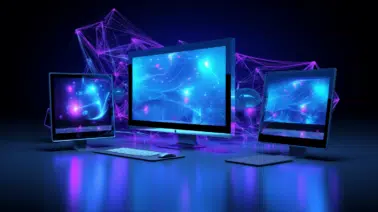“Learning results from what the student does and thinks and only from what the student does and thinks. The teacher can advance learning only by influencing what the student does to learn.”
(Herbert A Simon; referenced in “How Learning Works” by Susan Ambrose et al).
What a great quote!
Herb was my friend and mentor at Carnegie Mellon University. And he was perhaps Carnegie Mellon’s most dedicated teacher. As a Nobel laureate in economics and a Turing Award winner, Herb made a point to teach the freshman language class. I recall being in an auditorium filled with 800 students with Herb waving dictionaries at us: a big comprehensive one and a small one. Which one, he quizzed us, should you take with you when travelling? After an uncomfortably long pause with students guessing – after all this was just a yes/no question – he triumphantly proclaimed, it’s the small one. Because it fits in your pocket.
Herb’s quote above summarizes all there is to know about Udacity. At Udacity, learning results from what the student does and thinks. The instructor at Udacity can advance learning only by influencing what the student does to learn.
A Udacity class is different from most other online classes. It is not centered on the professor. It is not about performance, lectures, monologue. It’s not about listening. It is all about student thinking and student problem solving.
The key element of a Udacity class is the student exercise. Sometimes exercises are as mundane as a multiple choice quiz. Yet others require students to implement advanced scientific concepts in software. Exercises come in sequences curated to lead students onto a path. They start easy; they progress. The role of the teacher is to curate these exercises, to explain them, and to assist students when they get stuck. And exercises often come first, before presenting solutions. We challenge our students to think – not just to memorize and apply known solutions. So at Udacity the teacher is the student’s coach. In our system, students can easily advance to the next exercise when no more explanation is needed, or they can rewind the teacher as many times as they want. Our mission is to empower the student.
Udacity is not about assessment. It’s not about grades. It’s about mastery. This is an important difference. In most of higher education, the pacing of a class is fixed (as Sal Khan points out), and if students fail to acquire a skill in a certain time, they just get a bad grade. Udacity classes allow students to progress at their own pace. Students can take exams as often as they wish. It’s not the failures that matter, it’s the successes. When a student finally solves all problems, mastery has been achieved. This is what we are after. We don’t certify failure to reach mastery in a given time window. We certify success!
Udacity classes are also about intuition. I believe everything in math and sciences can be made more intuitive. I believe intuition beats formalisms when it comes to understanding concepts and applying them to real-life problems. In my own classes – from Introduction to Statistics to Advanced AI – I take pride in building intuition through exercises and simple explanations.
Hands down the most important aspect of Udacity is the following. At Udacity, we don’t know. When Peter and I launched AI class back in 2011, I had no clue whether teaching large number of students online made any sense; I only had an inkling. And we didn’t know how to teach online. In the past year, we have made a lot of progress. But we still don’t have all the answers. The Udacity team are learners, too.
This is why I view Udacity as one big experiment. Every class is an experiment. Sometimes we mix basic with advanced material. Sometimes we optimize the visual production quality of the material. We run countless experiments. And we carefully analyze the data. Data comes in the form of collective statistics (e.g., quiz results). And it comes in the form of individual testimonies. We eagerly want to transform teaching into a data-driven science. At Udacity, we can look at every aspect of student problem solving and engagement, and meticulously improve our courses based on all this. We aspire to “discover” what works online from data.
Creating Udacity has been the single most amazing thing in my life. I care passionately about education. I believe education is the core of modern society, and access to high-quality education must be a basic human right. It is a privilege to have the trust and dedication of so many students and educators. If Udacity succeeds, it will change humanity. We aspire to bring meaningful and effective education to everyone in the world.



